A Mirror for Americans
Related Publications by Cornelius N. Grove
Communication Across Cultures: A Report on Cross-Cultural Research . National Education Association, 1976.
Cross-Cultural and Other Problems Affecting the Education of Immigrant Portuguese Students in a Program of Transitional Bilingual Education: A Descriptive Case Study. Ed.D. dissertation, Teachers College, Columbia University, 1977.
The Culture of the Classroom in Portugal and the United States. The Bridge , 1978.
U.S. Schooling through Chinese Eyes. Phi Delta Kappan , Vol. 65 (7), 1984.
Secondary Education in the United States: An Overview for Educators from Abroad . Council on International Educational Exchange, 1990.
How People from Different Cultures Expect to Learn. Grovewell , 2003.
Understanding the Two Instructional Style Prototypes: Pathways to Success in Internationally Diverse Classrooms. International Communication Competencies in Higher Education and Management , Marshall Cavendish Academic (Singapore), 2006.
Encountering the Chinese: A Modern Country, An Ancient Culture, 3 rd Ed . Intercultural Press, 2010 (1st Ed., 1999). With co-authors Hu Wenzhong & Zhuang Enping.
The Aptitude Myth: How an Ancient Belief Came to Undermine Childrens Learning Today . Rowman & Littlefield, 2013.
Culturally Responsive Pedagogy. Encyclopedia of Intercultural Competence , Sage, 2015.
Pedagogy Across Cultures. International Encyclopedia of Intercultural Communication . Wiley-Blackwell, 2017.
The Drive to Learn: What the East Asian Experience Tells Us about Raising Students Who Excel . Rowman & Littlefield, 2017.
A Mirror for Americans
What the East Asian Experience
Tells Us about Teaching
Students Who Excel
Cornelius N. Grove
ROWMAN & LITTLEFIELD
Lanham Boulder New York London
Published by Rowman & Littlefield
An imprint of The Rowman & Littlefield Publishing Group, Inc.
4501 Forbes Boulevard, Suite 200, Lanham, Maryland 20706
www.rowman.com
6 Tinworth Street, London SE11 5AL, United Kingdom
Copyright 2020 by Cornelius N. Grove
All rights reserved . No part of this book may be reproduced in any form or by any electronic or mechanical means, including information storage and retrieval systems, without written permission from the publisher, except by a reviewer who may quote passages in a review.
British Library Cataloguing in Publication Information Available
Library of Congress Cataloging-in-Publication Data
Names: Grove, Cornelius N., author.
Title: A mirror for Americans : what the East Asian experience tells us about teaching students who excel / Cornelius N. Grove.
Description: Lanham, Maryland : Rowman & Littlefield, 2020. | Includes bibliographical references. | Summary: Grove asks not that we copy East Asian teaching approaches, but that we use them as a mirror to gain insights into typically American approaches and their underlying values, which are handicapping our childrens learning Provided by publisher.
Identifiers: LCCN 2020007475 (print) | LCCN 2020007476 (ebook) | ISBN 9781475844603 (cloth) | ISBN 9781475844610 (paperback) | ISBN 9781475844627 (epub)
Subjects: LCSH: EducationAims and objectivesUnited States. | Educational changeUnited States. | Academic achievementUnited States. | Academic achievementEast Asia.
Classification: LCC LA217.2 .G77 2020 (print) | LCC LA217.2 (ebook) | DDC 370.973dc23
LC record available at https://lccn.loc.gov/2020007475
LC ebook record available at https://lccn.loc.gov/2020007476
 The paper used in this publication meets the minimum requirements of American National Standard for Information SciencesPermanence of Paper for Printed Library Materials, ANSI/NISO Z39.48-1992.
The paper used in this publication meets the minimum requirements of American National Standard for Information SciencesPermanence of Paper for Printed Library Materials, ANSI/NISO Z39.48-1992.
Reward children for good behavior? I think its demeaning.
Japanese elementary school teacher1
Chinese and Japanese elementary school classrooms, contrary to common stereotypes, are characterized by frequent interchange between teacher and students, enthusiastic participation by the students, and the frequent use of problems that require novel and innovative solutions.
Veteran researchers Harold W. Stevenson and Shin-ying Lee2
Whether or not we envy other peoples one of their solutions, our attitude toward our own solutions must be greatly broadened and deepened by a consideration of the way in which other people have met the same problems.
Anthropologist Margaret Mead3
Contents
As in the case of both The Aptitude Myth and The Drive to Learn , my first Thank you! is for my longtime friend and professional colleague, Kay M. Jones, an eagle-eyed editor who also has the indispensable advantage of expertise in the languages and cultures of both Japan and China. Kay doesnt merely ensure that I write nothing Ill come to regret. She also keeps me abreast of matters such as the nuanced meanings of tatemae in Japanese, the accurate translation of an enigmatic quote from the Analects of Confucius, and even the correct spelling of authors names. Thank you, Kay, for always treating my manuscripts as your very own!
For this project from start to finish, Ive had five faithful readers, friends, and colleagues who read my drafts and made suggestions for improvement. One has been with me through all three projects: Willa Zakin Hallowell, my business partner for thirty years. The others include Kathy Molloy, Walt Beadling, Laila Williamson, and Dr. John Gillespie. Whatever clarity this book has attained is due, in part, to their advice and counsel. For each of you: Thank you!
This book is based entirely on the published findings of dozens of anthropologists and other social scientists from around the world, each of whom devoted weeks and even months to field research in the preschools and primary schools of Japan, China, Taiwan, and Hong Kong. After years of reading, taking notes on, and annotating their numerous reports, Ive come to deeply respect their thoughtfulness and commitment to accuracy. If I acknowledged them all by name here, Id need include at least every author cited in my Annotated Bibliography on this books website, www.amirrorforamericans.info. They all have my enduring gratitude forand this is no exaggerationmaking this book possible.
O wad some Powr the giftie gie us
To see oursels as others see us!
It wad frae mony a blunder free us...
Robert Burns, Scottish poet
Oh, would some Power the gift to give us
To see ourselves as others see us!
It would from many a blunder free us...
This is the third of three books in which I explore the underlying reasons why American schoolchildren have been found, again and again, to learn more slowly, and to learn less, than schoolchildren in East Asia.
Underlying reasons refers to the quiet but insistent influence of American cultural values the preferences and beliefs that most of us share regarding how people should conduct their day-to-day lives. American cultural values handicap our children from attaining the often-demonstrated learning prowess of children in East Asia. Yes, a few American children do meet and even exceed the standard set in East Asia. But considered as a group, American children lag behind their peers in East Asia academically and are too handicapped by our cultural values for most of them to catch up.
Have been found again and again refers to the results of international comparative tests that have been administered periodically to schoolchildren from many nations since the 1960s. The best-known tests are the PISA (Program for International Student Assessment), administered by the Organization for Economic Co-operation and Development, and the TIMSS (Trends in International Mathematics and Science Study), sponsored by the International Association for the Evaluation of Educational Achievement. Comparative tests arent the only indicators of the relative academic attainment of students from different nations, but they are the measures most often discussed.

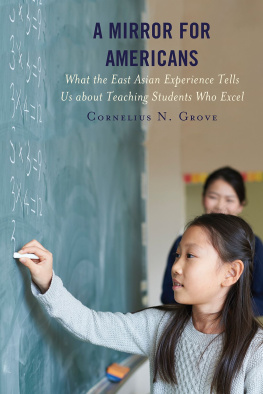
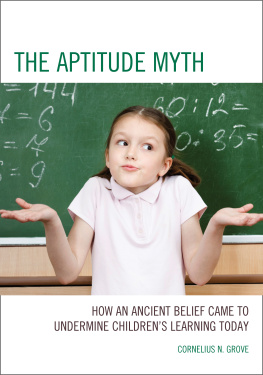


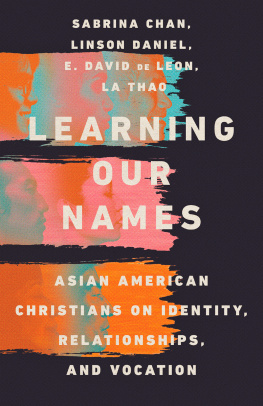

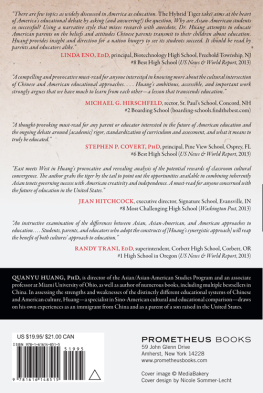
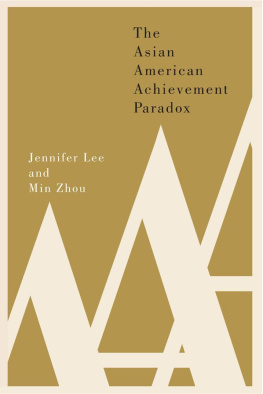

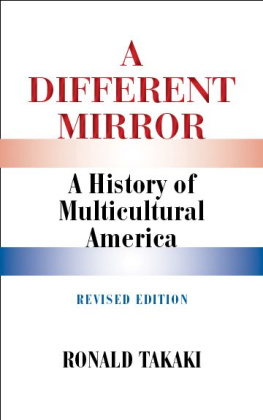
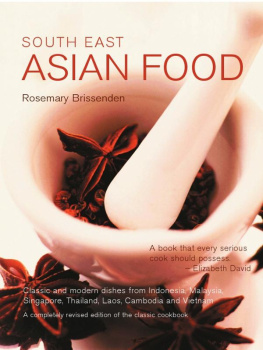

 The paper used in this publication meets the minimum requirements of American National Standard for Information SciencesPermanence of Paper for Printed Library Materials, ANSI/NISO Z39.48-1992.
The paper used in this publication meets the minimum requirements of American National Standard for Information SciencesPermanence of Paper for Printed Library Materials, ANSI/NISO Z39.48-1992.